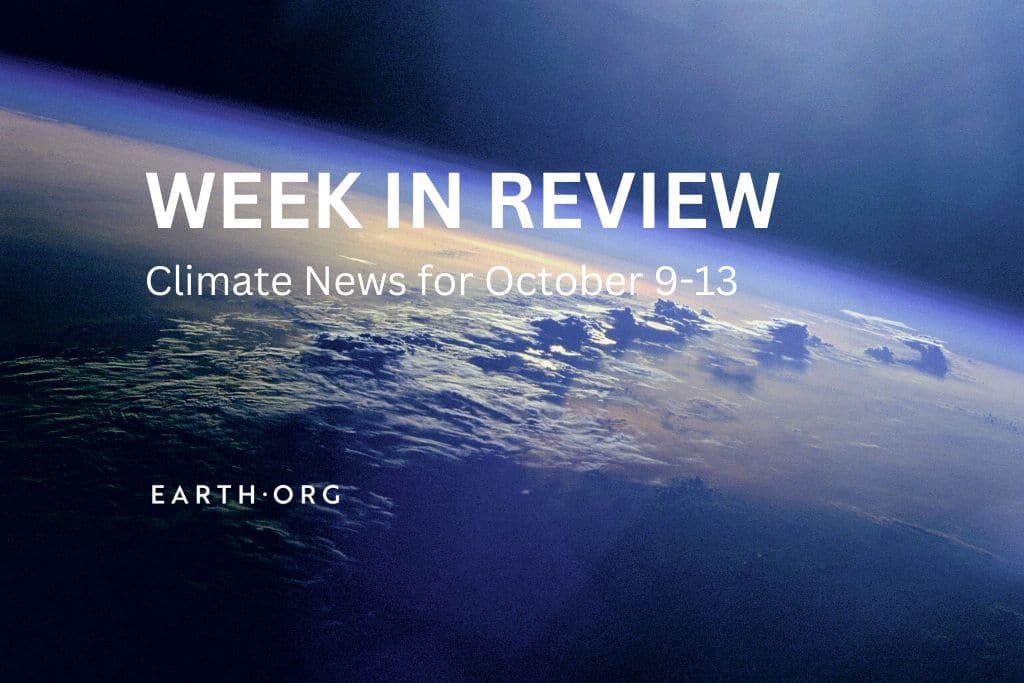This weekly round-up brings you key climate news from the past seven days, including a new report on the dangers of rapidly rising humidity levels, the huge impact of the Amazon River’s historic drought, and worrisome data about climate change-induced child displacements.
—
1. Climate Change Will Bring Long Periods of Lethal Heat and Humidity By End of Century, Even Under 2C of Warming
A new study, published Monday in Proceedings of the National Academy of Scientists, looks at how different warming scenarios – from the Paris Agreement’s 1.5C warming target through 4C – will affect temperatures and humidity levels in the atmosphere.
It found that heat and humidity levels will reach lethal levels for hours, days, and even weeks in some parts of the world by the end of the current century, making it impossible to stay outdoors.
“Around the world, official strategies for adapting to the weather focus on temperature only,” co-author Qinqin Kong of Purdue University said in a statement. “But this research shows that humid heat is going to be a much bigger threat than dry heat.”
Read more here.
2. Up to 500,000 Indigenous People Could Be Affected by Historic Amazon River Drought, Local Authorities Warn
A historic drought in the Amazon river has dried up waterways on which several Indigenous communities depend, leaving them stranded without fuel, food, and drinking water. Extreme temperatures in the regions have also killed more than a hundred river dolphins, as Lake Tefé’s waters exceeded 102F (38.8C).
Parts of the Amazon River, the largest river by volume and the second-longest in the world, currently in its dry season, have been drying up at a rate of 30 centimetres (11.8in) per day since mid-September as a result of record-high temperatures and unusual dryness in the region. By the end of September, the river stood at 16.4 metres (54 feet), about six metres below its level in the same period last year, leaving entire communities stranded and struggling to access vital resources including fuel, food, and fresh water.
Read more here.
3. Climate Change-Driven Extreme Weather Led to 43m Child Displacements in Past Six Years, UNICEF Says
Climate change-related weather events were responsible for at least 43.1 million child displacements across 44 countries in the past six years, new research has found.
The first-of-its-kind analysis, conducted by the United Nations International Children’s Emergency Fund (UNICEF) and the Internal Displacement Monitoring Centre (IDMC) and released Friday, looked at common weather-related hazards linked to the largest number of displacements.
It was found that floods, storms, droughts, and wildfires account for over 99% of all weather-related displacements recorded by IDMC since 2016 – the equivalent of approximately 20,000 children per day – while the rest was the result of other climate-related hazards including extreme heat, erosion, and landslides.
Read more here.
4. ‘Disappointing’ Climate Finance Pledges at Bonn Conference Despite Calls on Wealthy Nations to Increase Commitments Ahead of COP28
Last week’s Bonn conference on climate change witnessed a significant setback as the US and other rich countries failed to fulfil their pledge to the UN Climate Fund, further widening the gap between developed and developing nations and raising concerns about the global effort to combat climate change and support vulnerable nations in their adaptation and mitigation efforts.
The climate funding conference, held last Thursday in Bonn, Germany, brought together delegates from around the world to advance discussions on climate finance and encourage countries to fulfil their commitments made under the Paris Agreement. However, wealthy nations fell short of a US$10 billion target, managing to raise only $9.3 billion, only a fraction of what the UN Framework Convention on Climate Change (UNFCCC) says is needed by developing countries by 2030 to adapt to the rapidly deteriorating climate crisis.
Read more here.
5. ‘Immediate’ Methane Emissions Cuts Would Prevent Almost a Million Premature Deaths By Mid-Century, IEA Says
“Immediate” cuts to global methane emissions from fossil fuel production could prevent nearly one million premature deaths by 2050, a new study suggested.
The latest International Energy Agency (IEA) report Global methane emissions have been on the rise, with an annual increase of 14 parts per billion in atmospheric methane in 2022, the fourth-largest annual increase recorded since measurements began in 1983. Atmospheric methane levels are also shown to be 162% higher than pre-industrial levels, alarming the scientific community. emphasises the urgency of cutting methane emissions, the overwhelming majority of which come from fossil fuel production, in order to curb the worst impacts of warming. According to the IEA, cuts in methane emissions from fossil fuel operations would need to provide at least half of the reduction in overall methane emissions stemming from polluting human activities, if the world wants to meet the Paris Agreement targets.
Global methane emissions have been on the rise, with an annual increase of 14 parts per billion in atmospheric methane in 2022, the fourth-largest annual increase recorded since measurements began in 1983. Atmospheric methane levels are also shown to be 162% higher than pre-industrial levels, alarming the scientific community.
Read more here.
Read more here.

















